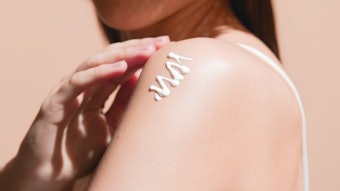
Physicians and patients now have a new tool available to combat the diffuse redness and flushing of rosacea. The United States Food and Drug Administration (FDA) has approved Galderma’s Mirvaso (brimonidine) topical gel, 0.33% for the topical treatment of rosacea-related facial erythema in adults 18 years of age or older. The once-daily gel acts quickly to reduce the redness of rosacea and lasts up to 12 hours, according to clinical data. The company expects the gel to be available in pharmacies in September 2013.
“Facial redness is the most common symptom of rosacea, but until now, physicians have been without prescription treatment options to specifically address this patient need,” said Mark Jackson, MD, clinical professor of medicine at the University of Louisville, dermatologist and a principal investigator for the phase 3 studies of Mirvaso gel. “The FDA approval of Mirvaso gel marks a turning point in rosacea treatment: we are now able to provide patients that deal with the daily frustrations caused by the redness of rosacea with an effective therapy.”
The approval was based on data collected from more than 550 patients enrolled in two phase 3 clinical studies of one-month duration. The results from both studies showed that adults who used Mirvaso gel demonstrated significantly greater improvement in the facial redness of rosacea than vehicle gel. In addition, a long-term study in 276 subjects that used Mirvaso gel for up to 12 months was also conducted. It is posited that the topical gel works by constricting the dilated facial blood vessels to reduce the redness of rosacea. It is applied in a pea-sized amount, once daily to each of the five regions of the face: the forehead, chin, nose and each cheek.
In controlled clinical trials the most common adverse reactions (incidence ≥ 1%) included erythema, flushing, skin burning sensation, and contact dermatitis. In the long-term study, the most common adverse events (≥ 4% of subjects) included flushing (10%), erythema (8%), rosacea (5%), nasopharyngitis (5%), skin burning sensation (4%), increased intraocular pressure (4%) and headache (4%).
Image courtesy of Galderma











